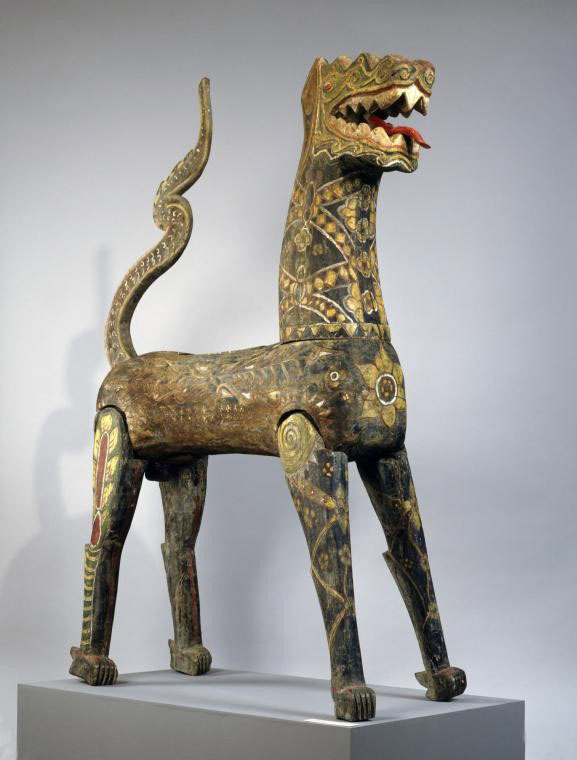Since painting horses on walls of the caves in Lascaux, humans have been creating artistic depictions of animals. Stampede: Animals in Art considers how humans look at the animal kingdom. Some artworks on display feature animals as the subject–painted horses, carved lions, woven dogs. Some incorporate animal materials–leather jackets, feather currency, fur rugs. Others integrate animals in more subtle ways–the pet dog of collectors,Vicki and Kent Logan, depicted in Enrique Martinez Celaya’s portrait, a cat appearing in the corner of a Renaissance painting. With art that spans from ancient times to today, the exhibition explores the varied ways that humans consider and recreate animals in art.
Many of the older artworks explore the animal world in religious or spiritual contexts. Stone sculptures from India and wooden masks from North America showcase similarities across cultures. From one continent to another, humans share a history of regarding the animal world in a spiritual manner, in a way that equates animals to deities and ethereal divinities. Likewise, ancient stylization of religious animals can indicate what characteristics or attributes cultures value. A figure with an enlarged stomach could signify power or fertility, while giant eyes might represent vigilance.

Guardian Lion (Northern Thailand), 1600s-1800s. Polychromed wood; 82-1/2 x 27 x 59-1/2 in. Denver Art Museum: Gift of Roberto Agnolini, 1985.18
The modern and contemporary art fixates on the forms of animals and investigate the technology behind art. A series of photographic portraits of cats and dogs focuses on the identity of animals. Portraits of animals encourage viewers to see pets in a humanizing light by using an art form typically reserved for human subjects. Likewise, the use of photography for animal portraits recognizes a major event in the history of photography; also part of the exhibition, Eadweard Muybridge’s Animal Locomotion marks an early use of stop motion photography to capture and study movement.
From the sacred to the secular, the ancient to the contemporary, Stampede turns to animals to understand humans. Artistic representations of animals reveal cultural perceptions of quotidian life and emphasize community beliefs.
Image at top: Eadweard Muybridge, Animal Locomotion Plate 650, about 1880s. Collotype; image height: 13-3/4 x image width: 19-5/8 in. Denver Art Museum: Gift of Frederic H. Douglas, 1956.88.680.

